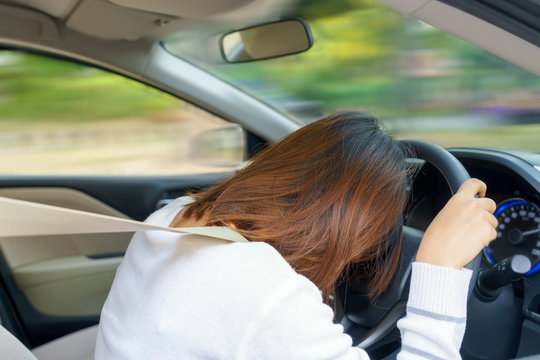For lovers of road trips, Idaho’s expansive landscapes and picturesque roadways are a dream come true. But let’s be honest—even the most beautiful vistas can’t make you forget how tired you are. You’re not alone if you’ve ever felt sleepy while driving and thought about taking a nap in your car. But it’s important to know Idaho traffic laws before you pull over and go for it.
This guide will help you understand the ins and outs of vehicle sleeping in the Gem State, including where it’s acceptable to do so, where it’s completely prohibited, and what could happen if you catch some unauthorized Zzzs.
Where Can You Legally Sleep in Your Car in Idaho?
- Public Rest Areas:
In Idaho, public rest areas are typically the most secure and permissible places to park your car. These designated areas provide a handy and (usually) peaceful location to rest, along with some basic amenities like picnic tables and restrooms. The rest facility at Hagerman on I-84 and the Salmon River rest area on US-93 are two popular rest stops along major routes. It’s crucial to remember that some rest places may have limitations on overnight visits, so to avoid any problems, make sure to check the notice or get in touch with the local authorities.
- Designated Campgrounds:
Take into consideration designated campgrounds for an even more immersive experience with extra amenities. These locations are convenient and permissible for cars because they frequently have picnic tables, bathrooms, and occasionally even fire rings. There are both paid and free campgrounds in Idaho to suit a variety of budgets. For a more established experience with possible costs and registration requirements, consider the picturesque Ponderosa State Park in McCall. Alternatively, explore Thousand Springs Campground near Hagerman for free.
- Walmart Parking Lots (with Permission):
Unbelievably, certain Walmart stores in Idaho may permit cars to park in their lots if the shop manager gives permission. It’s crucial to realize that this choice isn’t assured and may change based on the policies and local laws of the particular store. Before heading inside the store for the evening, always make a courteous approach and explain your circumstances to the manager.
Where is Car Sleeping in Idaho Illegal?
- Private Property:
This is a very bad idea. In Idaho, it is against the law to sleep in your automobile on private land without permission. This includes residential neighborhoods, parking lots of closed companies, and even seemingly uninhabited rural places. Recall that private property owners are entitled to determine who is permitted to use their land, and sleeping in your car without authorization is trespassing. The property owner or law enforcement may order you to leave and impose fines if you are discovered.
- Rest Area Restrictions:
While overnight stays are normally permitted in most rest places in Idaho, some may have restrictions. These limitations can be time constraints or particular driving regulations. Always check for signage or get in touch with the local government to be sure you’re following the rules at the particular rest spot you select.
- Shoulder of the Road:
It should go without saying that it is illegal and unsafe to sleep on the shoulder of the road in Idaho. It’s not only a surefire method to earn a citation from law enforcement for obstructing traffic, but it also puts you at risk of accidents with passing cars.
Potential Consequences of Illegal Car Sleeping in Idaho
- Trespassing Charges:
You may be charged with trespassing if you are discovered sleeping in your automobile on someone else’s property without authorization. Depending on the specifics, the charges’ seriousness and the accompanying penalty may change. The owner of the land may, in the worst instance, even ask to have your automobile towed.
- Disturbing the Peace:
Driving a car in some areas, particularly residential communities, may be deemed disruptive of the peace. While this might not be a big deal in official campgrounds or rest places, inadvertently stirring up trouble in a peaceful neighborhood could result in warnings or fines from the police.
- DUI Charges (Even When Not Driving):
It may surprise you to learn that there are situations in Idaho where you can be charged with DUI (driving under the influence) even if you are asleep in your car. DUI charges may be brought against you if the officer has reasonable suspicions that you were driving while inebriated (the car was running, the keys were easily accessible, etc.).
Safety Tips for Car Sleeping in Legal Locations
It is imperative that you put safety first when driving in Idaho, even in authorized areas. The following advice will help to guarantee a safe and relaxing experience:
Alternatives to Car Sleeping in Idaho
Although driving a car (nawm) is a practical option in some circumstances, it’s not always the safest or most comfortable option. Here are some different options to think about for taking breaks throughout your trip in Idaho:
A convenient and comfortable choice are hotels and motels, particularly in larger cities like Boise or Idaho Falls. They offer facilities like comfy beds, showers, and private bathrooms to guarantee a restful night’s sleep and a renewed beginning to your trip.
Camping may provide a more immersive experience in the great outdoors. Idaho has a lot of campgrounds in national parks, such as Sawtooth National Recreation Area and Yellowstone, which provide beautiful views and an opportunity to get in touch with nature. Before you camp, don’t forget to check for licenses and rules.
If you are going with others, you might want to think about designating a driver in advance. This makes it possible for people to alternate between driving and relaxing in the automobile. This ensures that everyone gets to your destination safely and rested and does away with the necessity for a car.
Conclusion
Idaho’s wide-open spaces and picturesque roads present countless chances for discovery. But keep in mind that attentiveness and safety are essential for any successful road journey. You can guarantee a safe and comfortable trip to Idaho by being aware of the driving laws and heeding the safety advice given above.
Making advance plans and taking into account other choices, such as hotels, campgrounds, or designated drivers, can improve your journey and leave you with priceless memories. So fasten your seatbelt, drive carefully, and take in the splendor of the Gem State!





























